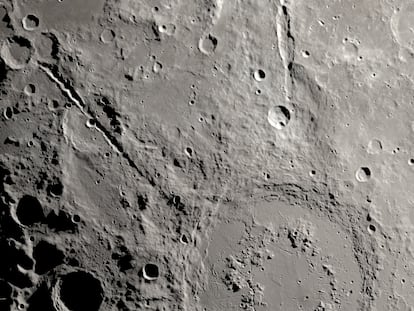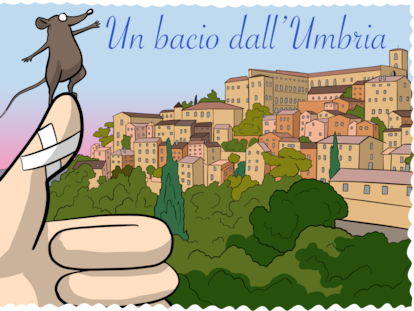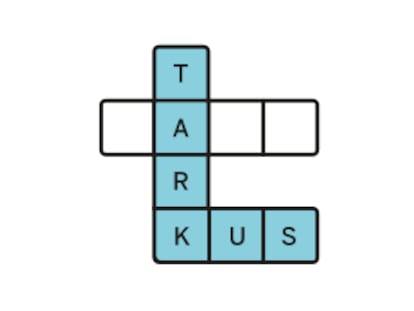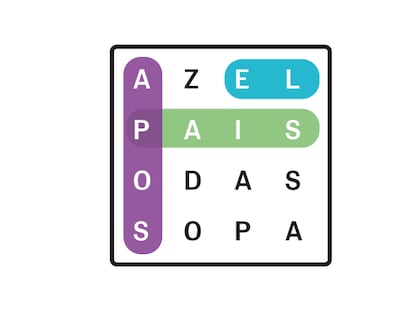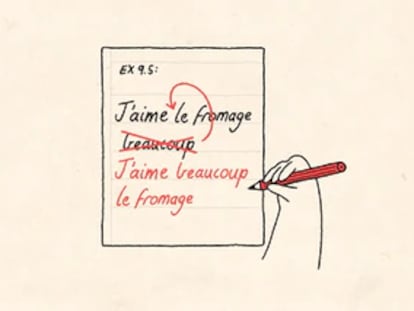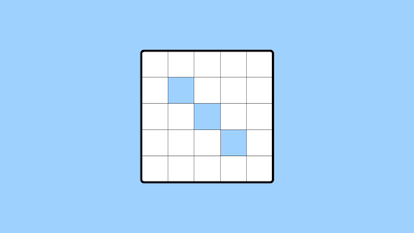Frozen water found in a young star system for the first time
Astronomers in the United States and Spain have detected crystalline ice on a Sun-like star in its infancy
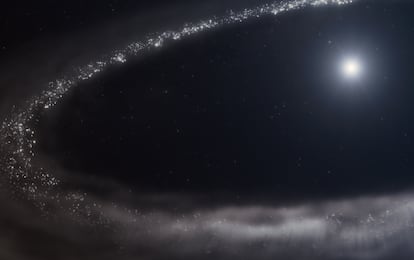
Earth’s water may be the result of one of the worst known cataclysms. About four billion years ago, Jupiter, Saturn, Uranus, and Neptune changed orbits and triggered a devastating rain of asteroids, comets, and other celestial bodies into the inner solar system, where they crashed into the Moon, Earth, and the rest of the rocky planets. These astronomical bombs — the scars of which are still visible on our Moon — were loaded with ice. Many astronomers believe that much of our planet’s water has this extraterrestrial origin, and that is arrived at the crucial moment for life to emerge for the first time.
Now, a team of astronomers has discovered — for the first time — crystalline water ice in a young star system beyond our Sun. The frozen water lies within a so-called debris disk — a massive ring of dust and rock — orbiting HD 181327, a star located 155 light-years away that is similar to our Sun. The discovery is important evidence that what happened in our own solar system could happen everywhere else in the universe.
“In this star, we are seeing our own past,” says Spanish astronomer Noemí Pinilla-Alonso, co-author of the study. The work was made possible thanks to NASA’s James Webb Space Telescope, which captured the light emitted by the debris disk and identified the molecules present. The work was published on Wednesday in Nature, a leading journal for top-tier global science.
Until now, water ice had only been confirmed on some of the moons of the giant planets, as well as on dwarf planets and other bodies in the Kuiper Belt, which lies beyond Neptune’s orbit. In 2012, the Hubble Space Telescope had already hinted at the presence of ice in HD 181327, but could not confirm it. The extraordinary capabilities of the infrared instruments aboard James Webb, launched in 2021, have now confirmed the presence of this essential compound beyond any doubt.

Astronomers believe that the debris ring observed around this star could be very similar to the one that existed around the Sun before the giant planets cleared their orbits. The star is only 23 million years old — a brief period compared to the 4.6 billion years of our Sun — and its disk is about three times larger than the Kuiper Belt, extending about 18 billion kilometers.
“Ice on Earth is crystalline; it forms under the right conditions to take on a hexagonal shape,” explains Pinilla-Alonso. “Amorphous ice, on the other hand, forms rapidly and therefore doesn’t have time to organize itself. This is the most common type of ice in the universe. Curiously, in the Kuiper Belt, the James Webb Telescope has shown us that all objects with water contain crystalline water, of the same type now detected in HD 181327, something we didn’t know before and are trying to explain.”
The James Webb Telescope has also allowed scientists to observe the so-called snowline: the boundary beyond which all elements are in the form of ice. In the areas closest to the star, the presence of frozen water is almost nonexistent due to the heat, while in the more distant areas, ice makes up as much as 20% of the total composition.
Astronomers believe that the bodies orbiting within the ring are colliding with each other and generating larger bodies that may eventually become planets. These impacts also scatter millimeter-sized ice particles throughout the system. The presence of carbon monoxide has also been confirmed in this star, and possibly carbon dioxide, alongside essential minerals, explains Pinilla-Alonso, which also resembles our own system.
“We’re probably seeing things very similar to what happened at the origin of our own solar system,” explains Pinilla-Alonso. “Solar systems begin with the protoplanetary disk of dust and gas, then with debris disks like this one, and finally with the formation of planets. Webb has detected the presence of ice at all of these stages. Observing this disk, and likely others to come, allows us to understand the bridges between these different phases for the first time,” adds the astronomer, who has recently joined the University of Oviedo through the Atrae program.
Pinilla-Alonso co-authored the study along with colleagues from the University of Florida, the University of Arizona, and the Space Telescope Science Institute, which operates the James Webb.
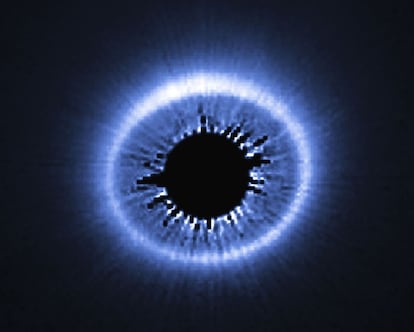
Guillem Anglada, a researcher at the Institute of Astrophysics of Andalusia (IAA-CSIC), who was not involved in the study, highlights its significance. “It’s a very important discovery, although not entirely unexpected,” he argues.
Anglada focuses on the study of protoplanetary disks, and his team has confirmed the presence of ice in these rings using space-based and ground-based telescopes. When the star reaches its first million years, its radiation evaporates almost all the gas, leaving only dust, from which the debris disk forms.
“This work shows quite clearly that there is a reservoir of ice in the outermost layers that is later spread thanks to the collision” of bodies of dust and rock, which are “continuously” impacting, says Anglada.
The snow line marks a crucial boundary. Ice-laden bodies pushed by giant planets can cross this boundary and end up colliding with rocky planets, forming oceans of liquid water. “This is what happened in our solar system, but it’s just a theory. We’re still far from knowing how it happens, and each case may be different,” Anglada warns.
A catastrophic event like that caused by the gas giants has not yet occurred on the star observed, but it is likely that it could. Preliminary studies suggest the presence of planets in this belt. And even if none existed, the authors of this new study estimate that they could form in about 100 million more years. Meanwhile, closer to home, researchers continue to gather data on the possible presence of a ninth planet in the solar system that could be disrupting the movement of icy bodies in the most remote areas of the Kuiper Belt.
Sign up for our weekly newsletter to get more English-language news coverage from EL PAÍS USA Edition
Tu suscripción se está usando en otro dispositivo
¿Quieres añadir otro usuario a tu suscripción?
Si continúas leyendo en este dispositivo, no se podrá leer en el otro.
FlechaTu suscripción se está usando en otro dispositivo y solo puedes acceder a EL PAÍS desde un dispositivo a la vez.
Si quieres compartir tu cuenta, cambia tu suscripción a la modalidad Premium, así podrás añadir otro usuario. Cada uno accederá con su propia cuenta de email, lo que os permitirá personalizar vuestra experiencia en EL PAÍS.
¿Tienes una suscripción de empresa? Accede aquí para contratar más cuentas.
En el caso de no saber quién está usando tu cuenta, te recomendamos cambiar tu contraseña aquí.
Si decides continuar compartiendo tu cuenta, este mensaje se mostrará en tu dispositivo y en el de la otra persona que está usando tu cuenta de forma indefinida, afectando a tu experiencia de lectura. Puedes consultar aquí los términos y condiciones de la suscripción digital.
More information
Archived In
Últimas noticias
Alain Aspect, Nobel laureate in physics: ‘Einstein was so smart that he would have had to recognize quantum entanglement’
Imelda Castro, the woman who wants to rule the cartel battleground of Sinaloa
The new victims of the Republican war on Obamacare: Millions hit by soaring health insurance premiums
A country divided on migrant rights: Some US states expand protections while others restrict them
Most viewed
- David King, chemist: ‘There are scientists studying how to cool the planet; nobody should stop these experiments from happening’
- Reinhard Genzel, Nobel laureate in physics: ‘One-minute videos will never give you the truth’
- Oona Chaplin: ‘I told James Cameron that I was living in a treehouse and starting a permaculture project with a friend’
- Sinaloa Cartel war is taking its toll on Los Chapitos
- Mexico completes its trade shift with the entry into force of tariffs on China and countries without trade agreements


